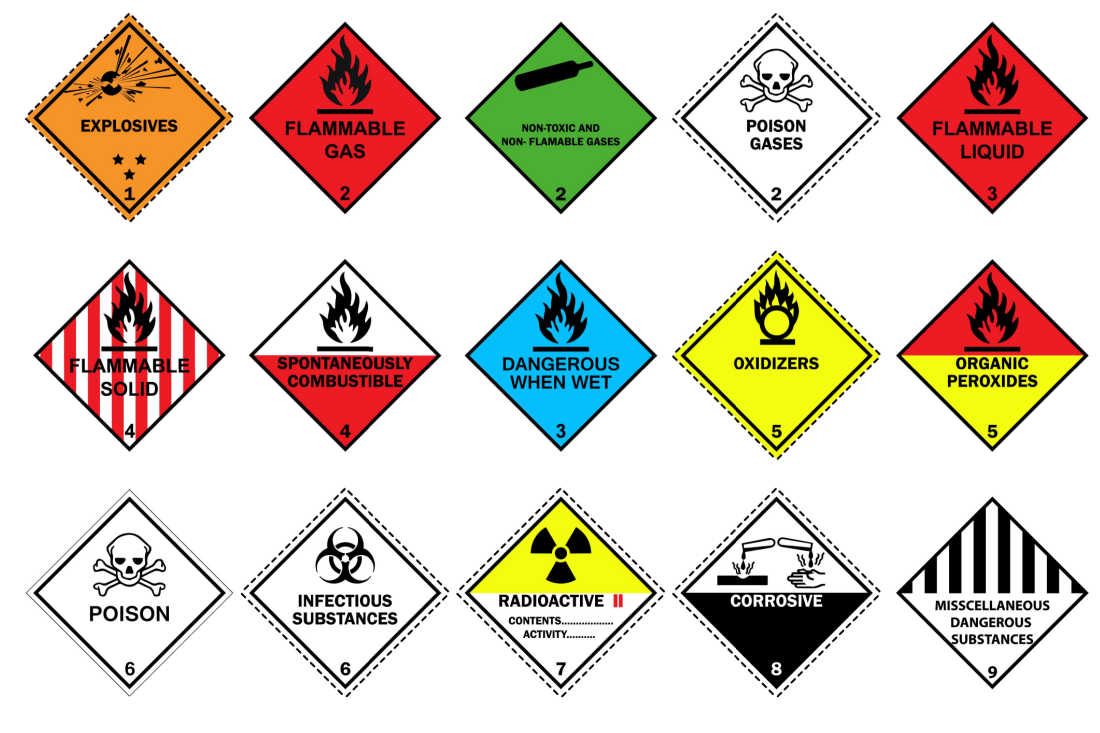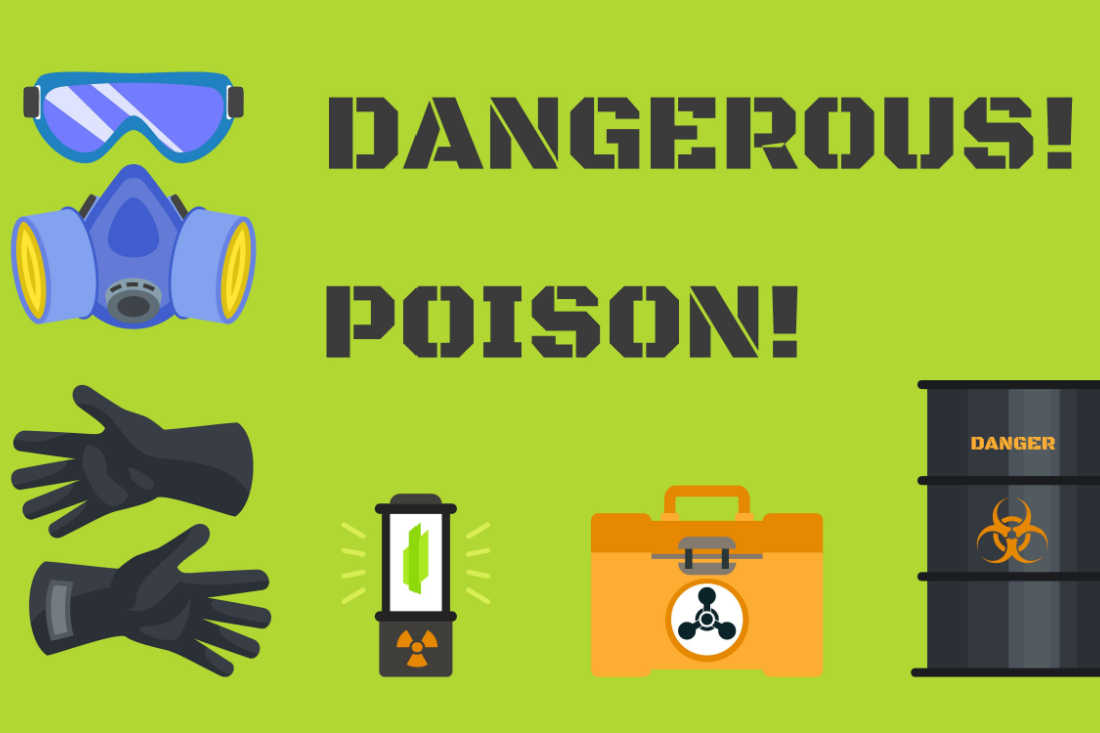Nine Classes of Dangerous Goods
Let’s look at the nine different dangerous goods classes with examples of each:
1. Explosives (Class 1): These substances and articles can cause explosions or release dangerous gases, such as fireworks, various ammunition types, or flares.
2. Gases (Class 2): These gases can be compressed, liquified, or dissolved under pressure. Gases can be further divided into three divisions: flammable, non-flammable, and toxic gases. Examples of gases include propane, oxygen, or chlorine.
3. Flammable Liquids (Class 3): Liquids that have a flashpoint below 60°C (140°F) are considered flammable. Gasoline, acetone, and ethanol are common examples here.
4. Flammable Solids (Class 4): These substances can easily ignite or contribute to a fire when in contact with an ignition source. Matches, sulfur, and certain metals fall under this class.
5. Oxidizing Substances and Organic Peroxide (Class 5): These substances provide oxygen, which can intensify fires or cause combustion. Examples include hydrogen peroxide and ammonium nitrate.
 Nine Classes of Hazardous Materials6. Toxic (Poison) and Poison Inhalation Hazard (Class 6): These substances can cause severe illness or death when exposed to living organisms. Pesticides, certain chemicals, and infectious substances fall under this category.
Nine Classes of Hazardous Materials6. Toxic (Poison) and Poison Inhalation Hazard (Class 6): These substances can cause severe illness or death when exposed to living organisms. Pesticides, certain chemicals, and infectious substances fall under this category.
7. Radioactive (Class 7): These are hazardous materials that emit ionizing radiation. Examples include uranium and plutonium. Radioactive materials can also be found within medical devices, such as X-ray equipment and CT scanners.
8. Corrosive Substances (Class 8): Corrosive materials can cause damage to living tissues or materials upon contact. Common examples include sulfuric acid and sodium hydroxide. UN 1760 belongs to Class 8.
9. Miscellaneous Dangerous Goods (Class 9): These substances present a significant risk during transportation but do not fit into any of the other hazard classes. Examples of class 9 dangerous goods include lithium batteries, asbestos, and dry ice. When shipping perishable products, such as biological specimens used in research, on dry ice as a coolant (UN 1845), it is important to understand that it is classified as a regulated dangerous good under IATA DG regulations.
On the other hand, blue ice and gel packs that are also coolants are non-hazardous and NOT considered dangerous goods.
